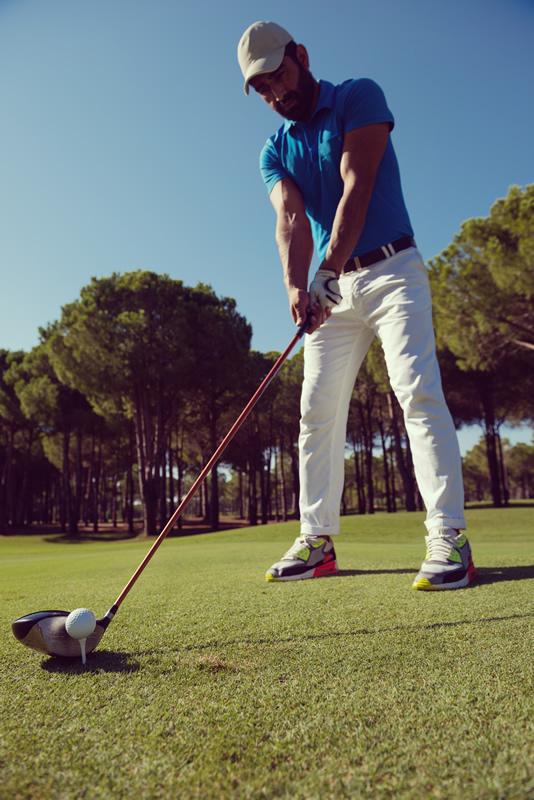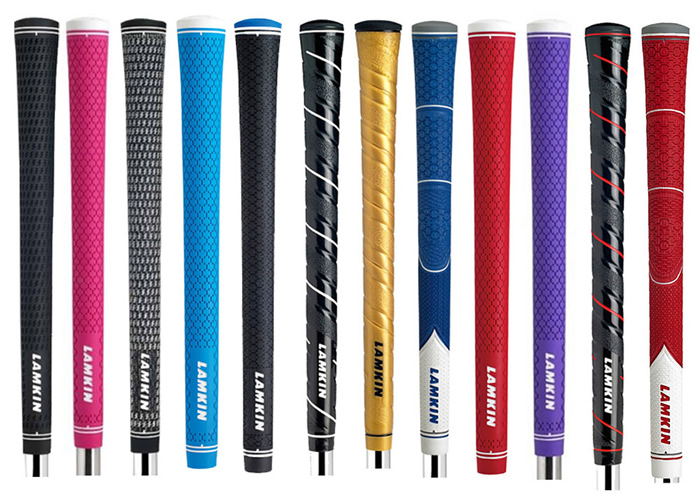Glossary
Golf-club fitting promises an individual adjustment of all golf clubs to the golfer in question, taking into account various parameters such as height, distance between the hands and fingers, position relative to the ground, etc.
We differentiate between »static fitting« and »dynamic fitting«.
Personal fitting by a club maker who is well versed in cutting, luing, measuring, and angles is what separates us from big renowned companies that produce off-the-shelf clubs, selling a „one size fits all“ product.
Personal support is fundamental when manufacturing a set of irons, a driver, or the woods; it builds trust and especially confidence on the path to achieving a better handicap.
- Static Fitting
Measuring arm length, hand size, fingers.
Club lengths are determined based on the body geometry.
Everyone has different arm and hand lengths. - Dynamic Fitting
Measuring the clubhead speed.
Test strokes with various irons.
Analysis of results using launch monitor, trajectory, moment of impact, face angle, etc.
 The length of the clubs for irons and woods is a very important aspect of static fitting. This calculated result is put to the test by hitting balls. If the golfer experiences discomfort with the clubs, they must be made l onger or shorter. Everyone’s body turns at different speeds, and there is a perfect length for every player.
The length of the clubs for irons and woods is a very important aspect of static fitting. This calculated result is put to the test by hitting balls. If the golfer experiences discomfort with the clubs, they must be made l onger or shorter. Everyone’s body turns at different speeds, and there is a perfect length for every player.
If a club is too long or too short, the balls will move in the wrong direction, leaving the golfer confused because the clubface does not meet the ball »square«.
Longer clubs produce a higher impact speed but are harder to control than shorter clubs. Shorter golf clubs enable the player to hit the »sweet spot« more regularly, as they allow better control.
With fitting it is important to find the golden medium, so that a good average length is achieved when striking the ball.
The lie angle refers to the angle between the lower edge of the sole (toe and heel) of an iron (the »leading edge«) and the shaft, measured along the shaft edge.
There are flat, upright, and steep lies. An incorrect lie angle – flat or steep – shifts the ball’s flight to the right or left.
Dynamic Lie Correction
Adjustment of the lie angle to suit the player, based on observation and analysis during active striking with all irons and all wedges on a »lie board« (the contact point is seen as an impression).
Consideration of the divots struck in the grass – every strike leaves a trace…
The correct lie angle is set accordingly on the irons using a loft and lie bending machine.
The loft is the irons‘ clubface angle. The loft figures increase from 1-iron to 9-iron in steps of 3–4 degrees; that is, they become lower. The 9-iron, for example, corresponds to an angle of 43 degrees. In woods, the angle is measured on the sole and to the clubface minus 90 degrees.
Bounce refers to the lower semicircular or flatter edge on the iron’s sole. Particularly in wedges, various sizes of bounce are available.
The shaft torque is the longitudinal torsion of the shaft. The lower the torque, the more torsion-resistant the shaft, e.g., a torque of 2.8 feels very hard and firm. But this would only suit a player with slower swing speed. The »regular« shaft torque is between 5.0 and 5.5.
With steel shafts the torque is hard to discern, as these shafts exhibit very little twist. The aim is through proper shaft fitting to find the right torque and flex for you.
The flex of golf clubs differentiates various stiffnesses of the shafts, such as: L, A, R, S, X. The manufacturers‘ supplied shafts often have tolerances, however, meaning you don’t always get what it says on the label.
With our measuring devices, we can determine the shaft flex precisely and therefore fit the right shaft to your driver or iron. After determining the swing speed, the recommended shaft flex can be established.
 The club grip should not be too thin, as otherwise it will not provide the proper hold or guidance. With the »Vardon« grip, for example, if the fingers push into the ball of the hand, his indicates that the grip is too thin.
The club grip should not be too thin, as otherwise it will not provide the proper hold or guidance. With the »Vardon« grip, for example, if the fingers push into the ball of the hand, his indicates that the grip is too thin.
Using templates and sample grips with varying thicknesses of underlay, one can easily tell which grip suits best … and it must also feel good, because the grip is the connection to the shaft and the key to controlling the club. The chosen grip thickness must be easy to hold and must feel comfortable. The normal grip sizes are: Ladies‘ Standard, Men’s Standard, Men’s Midsize, and Jumbo. Intermediate sizes can be obtained by adding tape.
Many attractive colors and shapes of grip are now available. The classical cord and half-cord grips mixed with rubber, multicompound or pure rubber grips, and the old classic leather grips.

